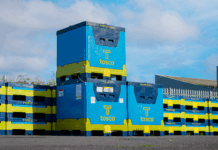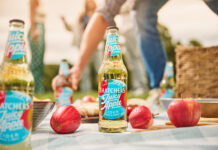GOUSTO is trialling what has been described as a ‘world-first’ edible packaging solution, to help improve the environmental credentials in its recipe boxes.
Following 15 years of research and one year of development, the stock cube wrapper is made from pea protein. Created in partnership with Xampla, the solution will be trialled in Gousto recipe boxes this month.
The edible packaging is made by engineering and drying a pea protein material into sheets that are said to have the same benefits as plastic, namely being able to preserve the food’s flavour and shelf life, but without any of the packaging waste. The material is also vegan and gluten-free.
Participants in the trial will enjoy the vegetable stock cube in Gousto’s Indian Spiced Carrot & Lentil Soup recipe, by dissolving the stock cube and its packaging in hot water.
Last year Gousto cut plastic by 50% in the company’s boxes by switching to more cardboard packaging and launching the Eco Chill Box, an insulator made of recycled cardboard that keeps ingredients fresh.
A further 17 tonnes of plastic could be saved by Gousto annually if the new edible stock cube packaging is rolled out in full.
The edible stock cube packaging is being trialed to replace Gousto’s existing stock mix sachets.
Gousto CEO and founder Timo Boldt said, “At Gousto, our purpose is to build products that have a positive impact on people and the planet and we invest in innovations that will help us get there. We are so proud of our Eco Chill Box and the significant amount of plastic we cut from our boxes as a result. This partnership with Xampla is another super exciting step towards reducing plastic packaging even further.”
Xampla CEO Simon Hombersley added, “This world-first edible pea protein packaging is the product of 15 years of University of Cambridge research, and over a year of development with the Gousto team. We’re so excited to be working with the recipe box company to offer more sustainable alternatives to plastic, and hope this marks the beginning of significant change within the industry and many more innovative packaging solutions in the future.”













